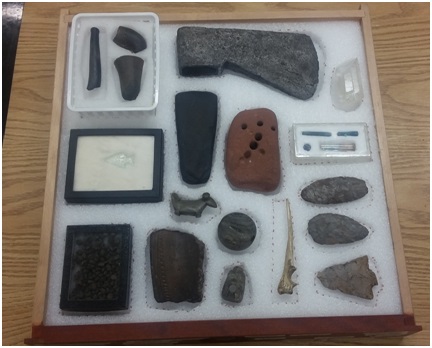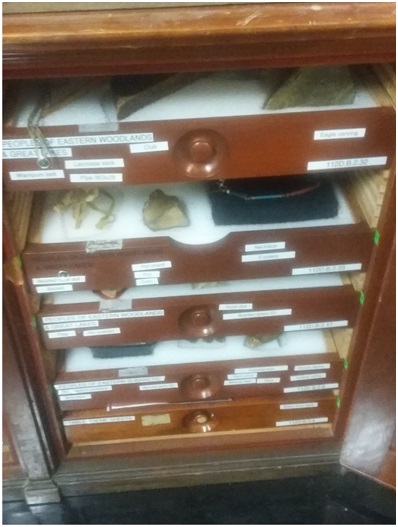First off, before we start, let me tell you what the Education Department does. Primarily, they're the people that lead the programs for school field trips and for adults who don't want to do walking tours. They tour you through the exhibits relevant to your program and take you to a classroom. There, depending on your program, they either do age-appropriate activities with you, or they show you artifacts that you can touch and teach you about them.
That's where most of my work happens – documenting the Education Department's artifacts in the classrooms.
But before I could do that, there were a lot of steps before I did any filing. On my first day of work, my supervisor informed me that due to a new organization system, all the artifact collections had to be moved to new cupboards. But just because they're sturdier than the objects you see behind glass cases doesn't mean that anyone can just toss them into a cupboard. After getting all the orientation out of the way, my first job was to cut out squares from industrial-sized sheets of Styrofoam.
Each had to fit perfectly into the cabinet tray – too small, and there's room for the artifacts to move and break. Too big, and the padding obviously won't fit. The step after that was to trace around the artifact, cut out the piece, thin out the foam cut out and place it back into the foam padding. This creates a little pocket to hold the artifact in place. Every artifact in the collection went through this step. Lucky for me, I didn’t have enough knowledge of the organization system or the fine motor skills to complete this step.
 A finished tray looks like this, but more on that later.
A finished tray looks like this, but more on that later.
What I had to do was label.
But with only so much tape to print on and so much room on the cabinet to stick them on, the names of artifacts had to be concise, but not so vague that the artifacts get mistaken for one another. Once I finished the artifact labels, I labelled the organization code and the themes each tray of objects is sorted by. Then I recorded the location of each object using its tray's organization code and photographed each tray as a reference guide for teachers.
 The final product.
The final product.
Only then, after a month and a half, could I update the artifacts' catalogue files.
But seeing as that hasn't happened yet, all I can say is that I'm ecstatic that I know more about the ROM than I did six weeks ago and anticipate what I'll know six weeks from now.
